Color is lacking this time of year, so I am always glad to see holiday plants for sale at my local garden center. Poinsettias and others are very enticing, but the one plant I can’t resist is the kalanchoe. The clusters of starlike, cheerful flowers are long-lived and can add a happy note to a gloomy day. Discover the kalanchoe!
Advertisement
This beautiful blossoming succulent plant is very low maintenance to the point of being practically bullet-proof. The big box stores can’t even kill them! The laziest gardener is almost guaranteed success. After all, the hardest part—getting them to bloom for the holidays—has already been done for you.
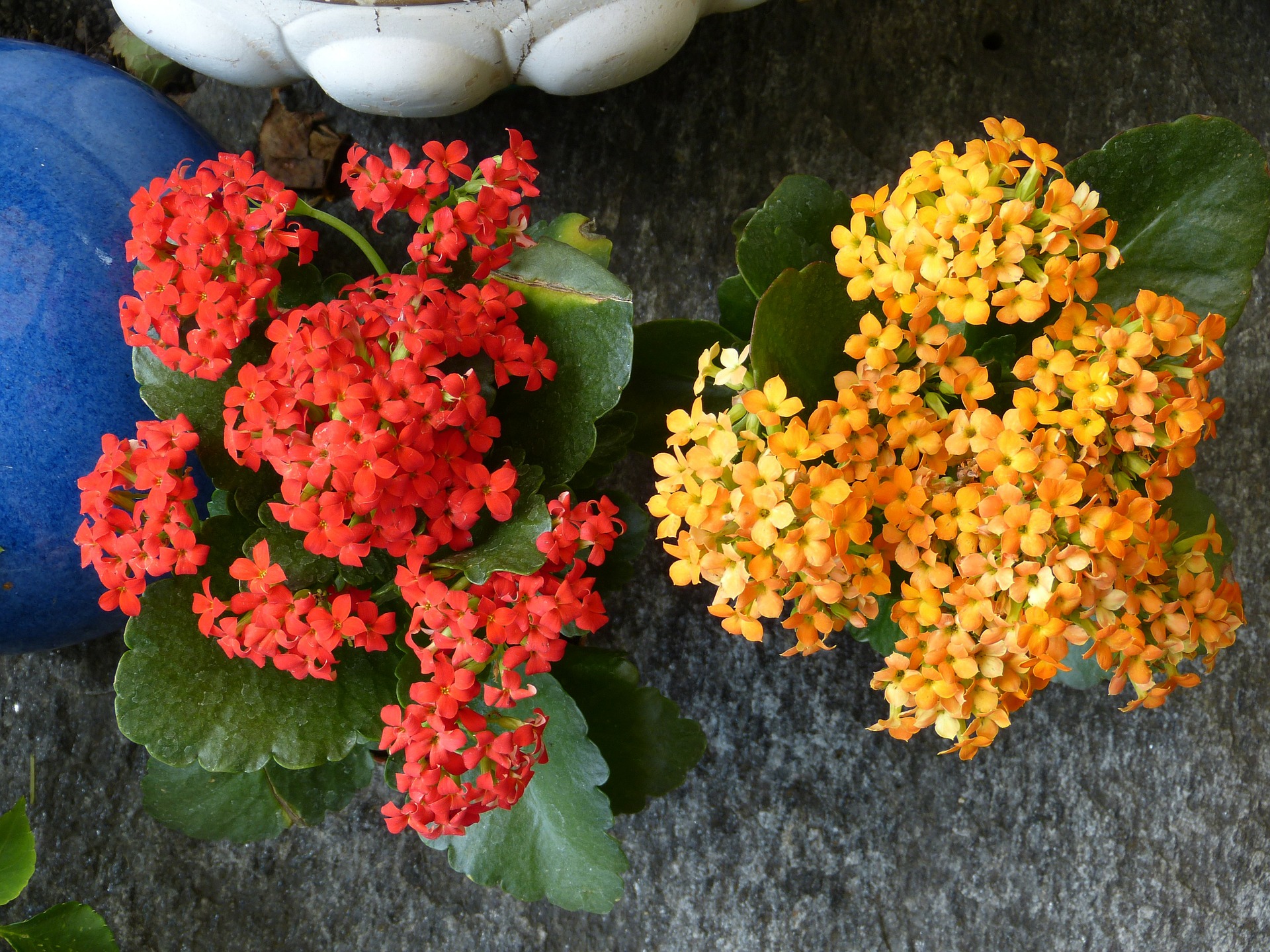 Who can resist their happy blooms?
Who can resist their happy blooms?
Like other succulent plants, they store water in their thick waxy leaves so if you forget to water for a few weeks, no problem. In fact overwatering is more of an issue. Pot them in well-drained, sandy soil; a 50/50 mix of potting soil and cactus soil is perfect. Wait until soil dries out completely then water deeply. Allow the pot to drain before placing it back on a saucer so it doesn’t have to sit in water. Soggy roots mean certain death.
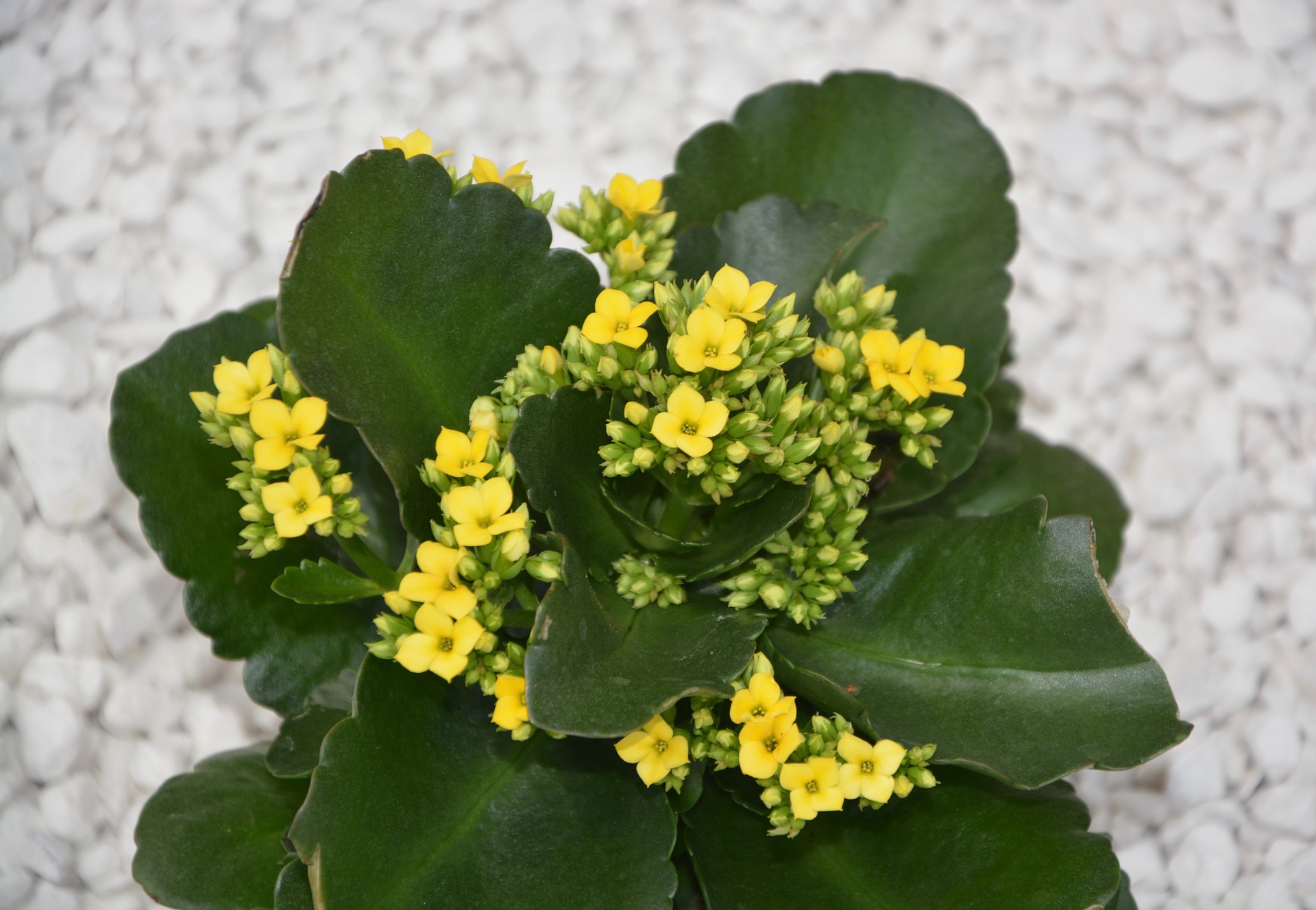
They like bright light but don’t need all day sun especially when in flower. To help the blossoms last longer, limit sun to a half day while in bloom. Flowers also last longer if the plant is in room that gets cool at night—about 45 to 65 degrees.
When your plant has finished flowering remove the spent blossoms and pinch back any leggy growth to keep the plant bushy. They can grow to be 8 to 12 inches tall. Fertilize it monthly with a low nitrogen houseplant fertilizer spring to fall. Never feed it when it is in flower.
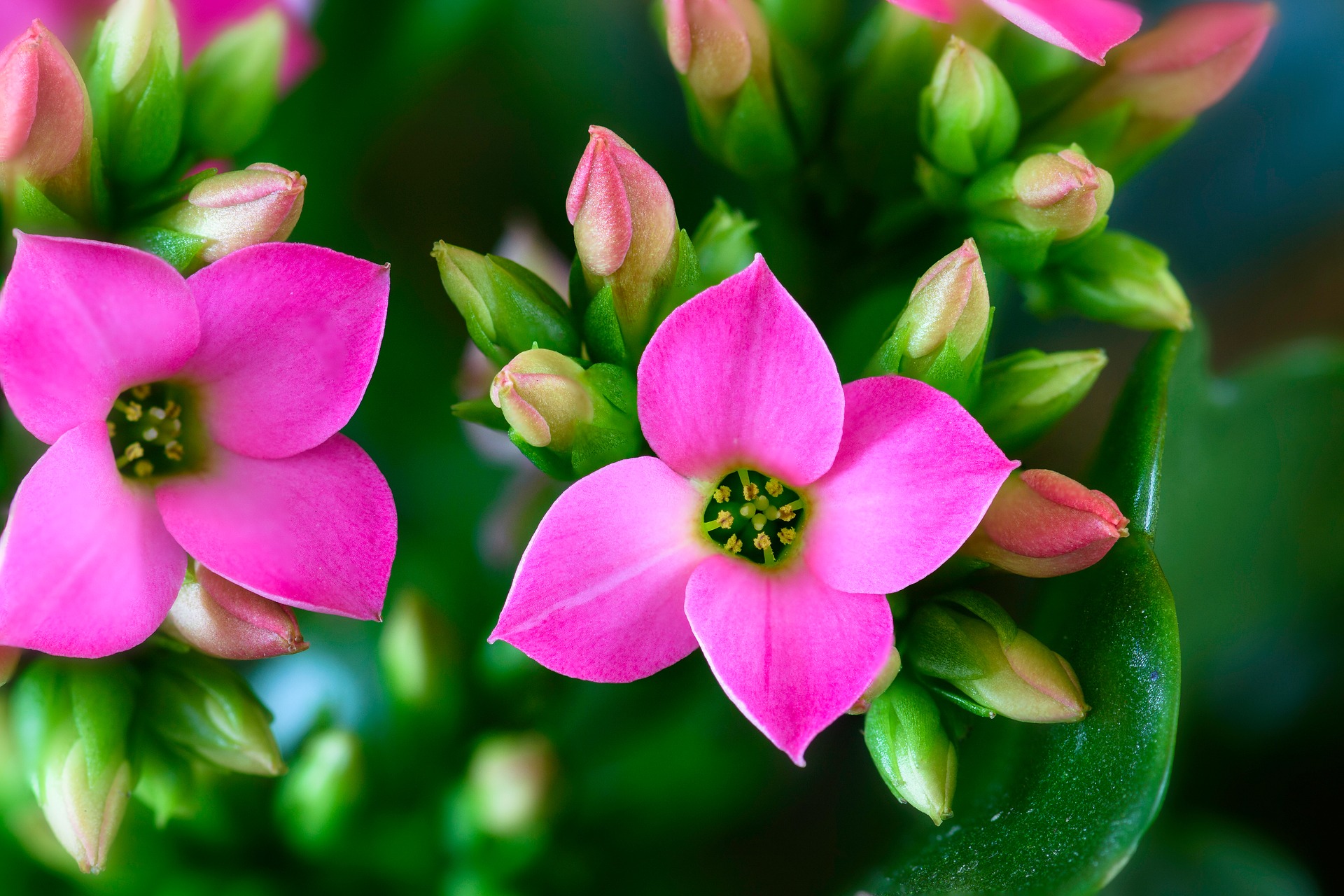 It has glossy green leaves with scalloped edges and bears clusters of four-petalled single flowers.
It has glossy green leaves with scalloped edges and bears clusters of four-petalled single flowers.
To have it rebloom next year you need to limit the amount of light it gets in the fall. Just like a poinsettia, kalanchoe is sensitive to day length, needing the shorter days of fall and winter to set flower buds. Keep the plant in a cool room where it will get only 8 hours of bright light and 14 hours of total darkness per day. The natural winter darkness starting in Oct. usually is sufficient. Given 4-6 weeks of this treatment it should start to form buds and be ready to blossom in Jan. or Feb. For Christmas blooms you’ll have to start the cool dark treatment earlier.
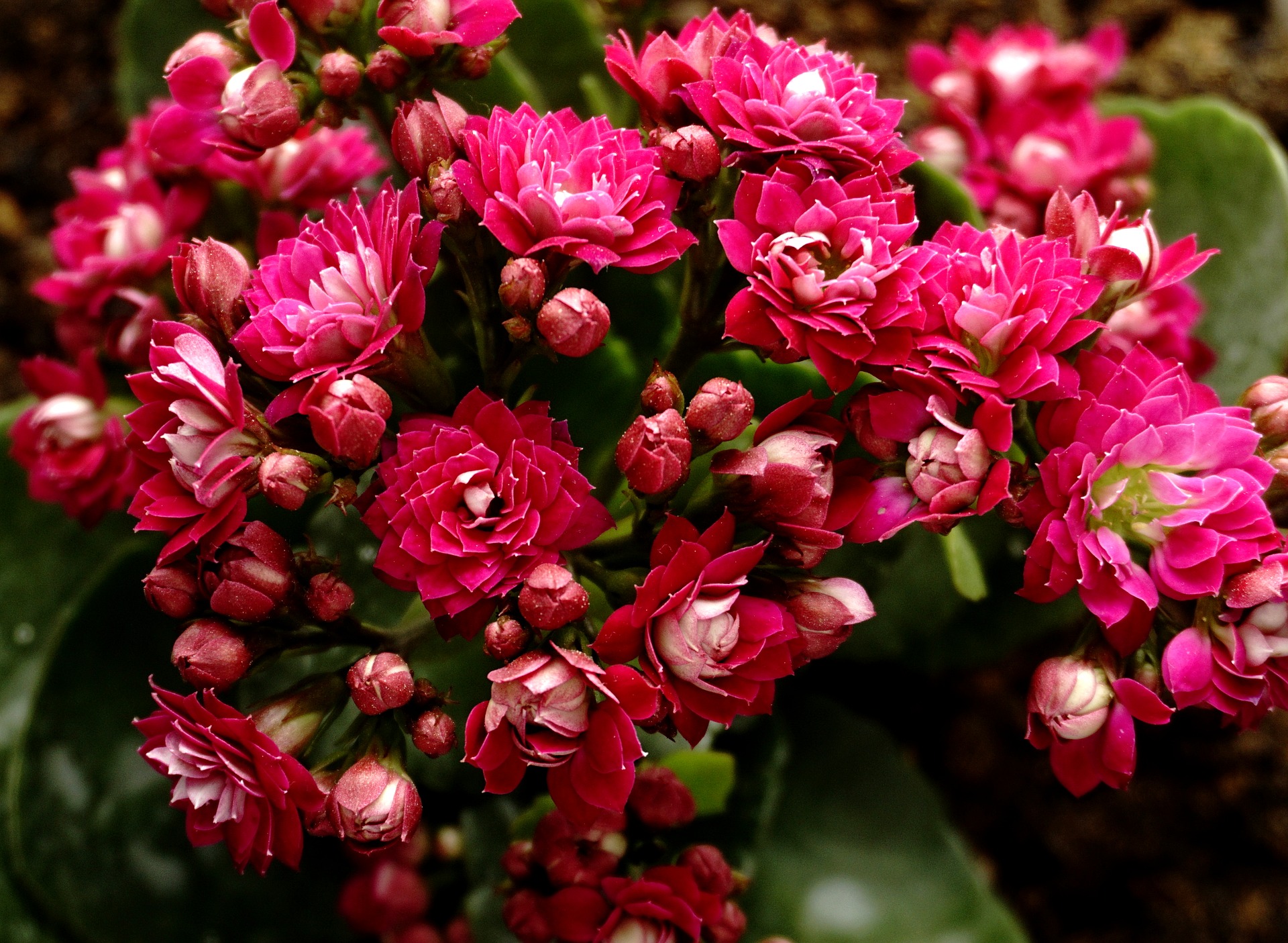
Some have double flowers that look like small rosebuds with up to 26 petals each.
There are 125 species of kalanchoe, most native to Madagascar, and many hybrids. There is great variation. Some have hanging bell-like blossoms, others have small sprays of flowers. There are some with red paddle-like leaves while others have gray felted leaves. Some are tall and upright while others are ground-huggers. The one we see most often around the holidays is Kalanchoe blossfeldiana, called flaming Katie for its bright colors. It has glossy green leaves with scalloped edges and bears clusters of four-petalled single flowers.
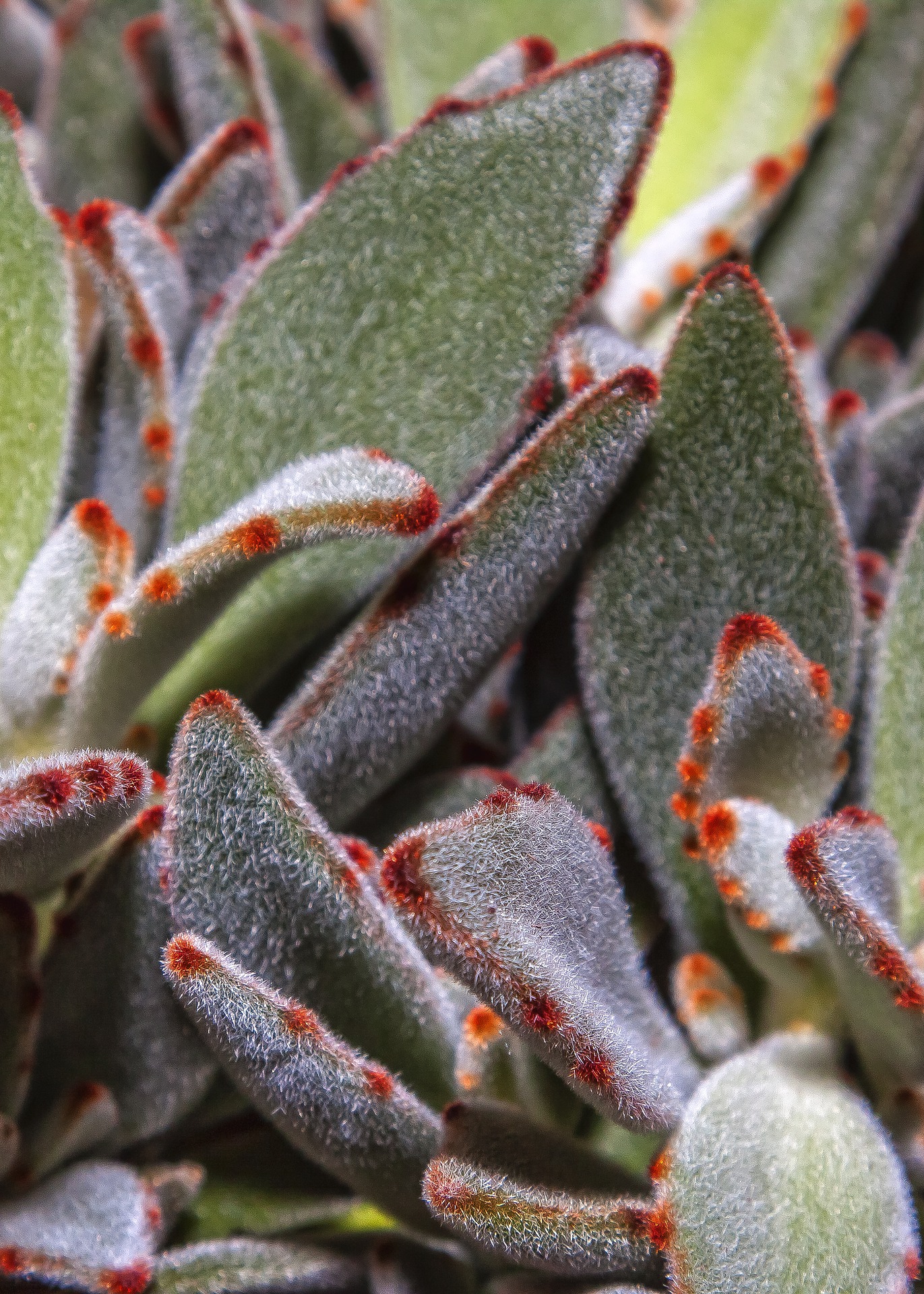
For something completely different, try the Panda plant K. tomentosa. It is pale green with white velvety hairs. In full sun it will develop reddish/brown dots along the edges of the leaves. It blossoms in winter. It is a slow grower, only needing fertilizer every 6 months but will eventually grow to be about 18 inches tall. You can prune it to keep it bushy or grow it in a hanger. There are hybrids called ‘Teddy Bear’ and ‘Chocolate Soldier’. One called ‘Super Fuzzy’ lives up to its name and is super fuzzy!
Panda plant is sometimes called pussy ears but don’t let your cat or dog chew on it. Like all kalanchoes, it is toxic to pets. See more plants which are poisonous for pets.
Learn how to care for your other Christmas plants to keep them going strong: poinsettia, Christmas cactus, cyclamen, and amaryllis.


 Who can resist their happy blooms?
Who can resist their happy blooms?
 It has glossy green leaves with scalloped edges and bears clusters of four-petalled single flowers.
It has glossy green leaves with scalloped edges and bears clusters of four-petalled single flowers.









Comments